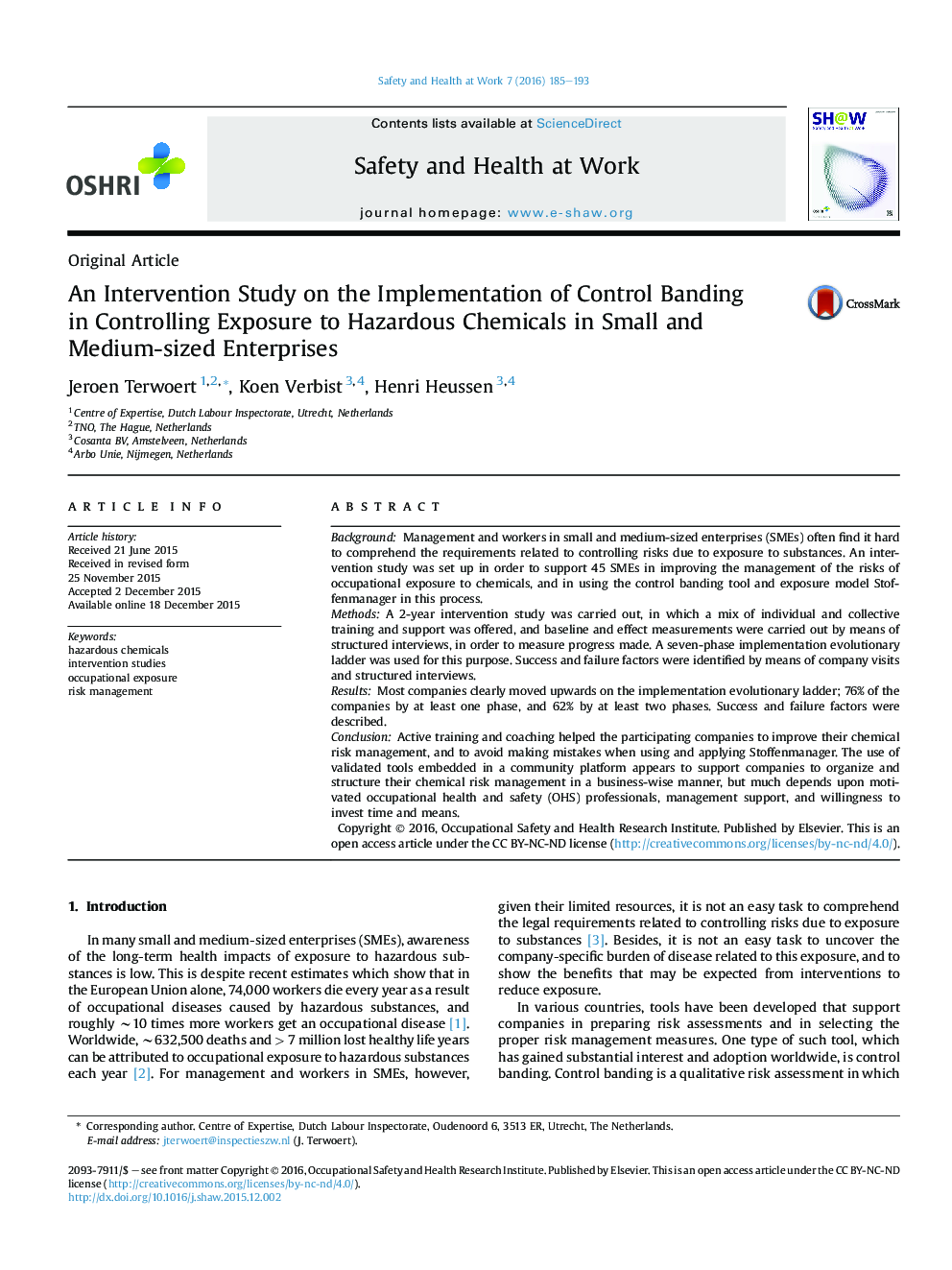| Article ID | Journal | Published Year | Pages | File Type |
|---|---|---|---|---|
| 1091948 | Safety and Health at Work | 2016 | 9 Pages |
BackgroundManagement and workers in small and medium-sized enterprises (SMEs) often find it hard to comprehend the requirements related to controlling risks due to exposure to substances. An intervention study was set up in order to support 45 SMEs in improving the management of the risks of occupational exposure to chemicals, and in using the control banding tool and exposure model Stoffenmanager in this process.MethodsA 2-year intervention study was carried out, in which a mix of individual and collective training and support was offered, and baseline and effect measurements were carried out by means of structured interviews, in order to measure progress made. A seven-phase implementation evolutionary ladder was used for this purpose. Success and failure factors were identified by means of company visits and structured interviews.ResultsMost companies clearly moved upwards on the implementation evolutionary ladder; 76% of the companies by at least one phase, and 62% by at least two phases. Success and failure factors were described.ConclusionActive training and coaching helped the participating companies to improve their chemical risk management, and to avoid making mistakes when using and applying Stoffenmanager. The use of validated tools embedded in a community platform appears to support companies to organize and structure their chemical risk management in a business-wise manner, but much depends upon motivated occupational health and safety (OHS) professionals, management support, and willingness to invest time and means.
